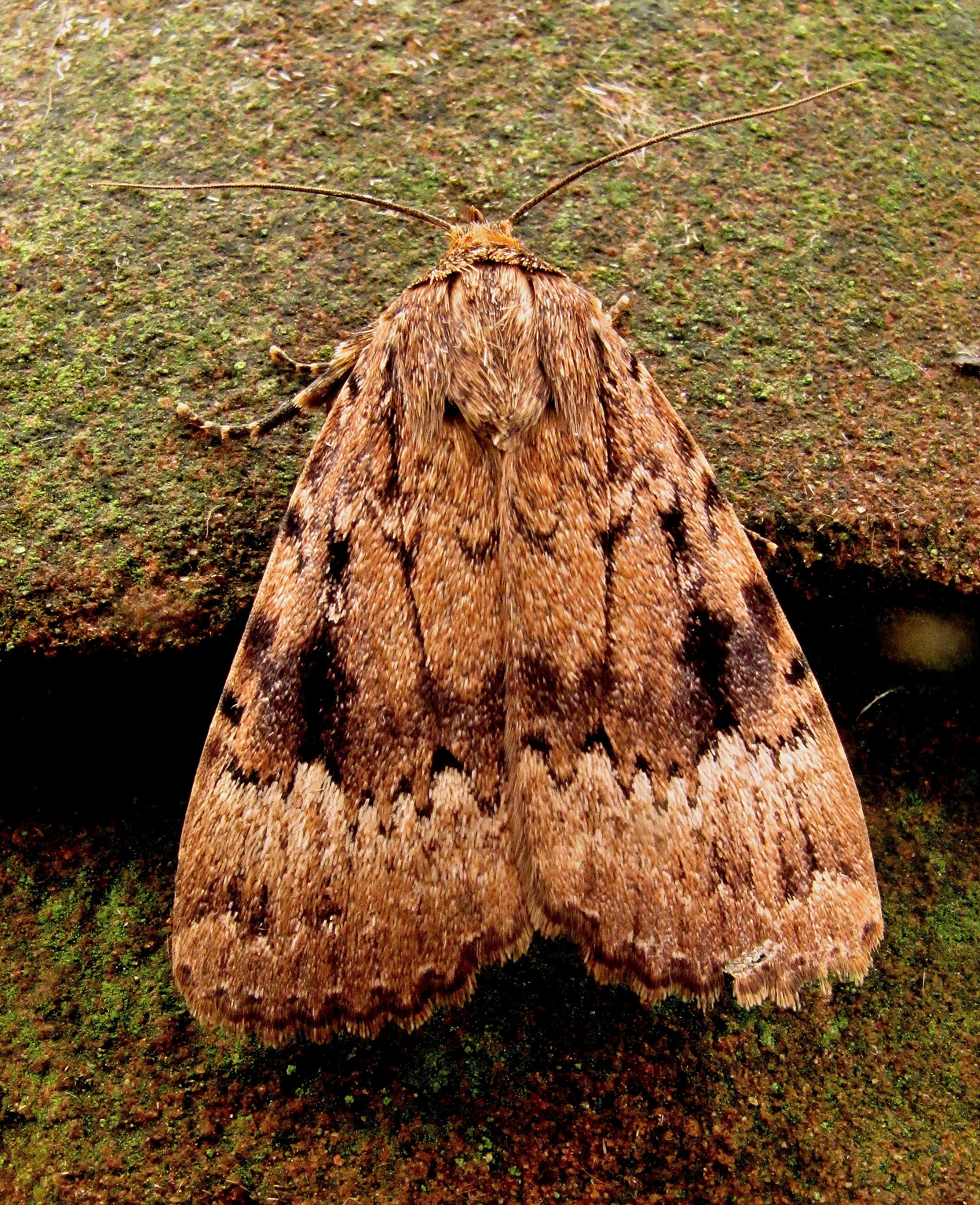All moths species have been assigned a grading representing how easy or difficult the species is to identify. The grading may differ for different life-cycle stages.
Please note that, regardless of the identification guidelines given above, all new Vice-county records should be supported by one or more good quality images showing all of the critical identification features or by a specimen.
Macros
For macro moths, the ID difficulties for adult moths have been assigned by local moth recorders. The grading details are given below.
Adults
- Category 1: Generally distinctive species unlikely to be confused with other species. Usually accept record within documented range and usual occurrence period for the region; otherwise one or more good quality photographs, or possibly a specimen, would be required. Applies to species which will quickly become familiar to those gaining experience in micro-moths.
- Category 2: Can be confused with other species. Good quality photographs or possibly a specimen will be required if the recorder is not familiar with the species. If records have previously been submitted and accepted, Category 1 criteria may apply subject to confirmation from your VCR. Worn examples are likely to be unidentifiable unless a specimen is retained for microscopic examination.
- Category 3: Very scarce species (includes very scarce adventives/migrants). A voucher specimen may be required by your VCR (seek advice before releasing the moth). A good set of photographs showing all critical identification features clearly may suffice in some cases.
- Category 4: Dissection required.
A few macro moths, including some commonly found in gardens, are very difficult to identify to species level and can often only be positively identified by dissection and examination of the genitalia under a microscope. These difficult species should be recorded as ‘aggregate’ species.
| Species | ID requirement | Record as |
|---|---|---|
| Ear moths (Ear, Large Ear, Crinan Ear, Saltern Ear) | Examination of genitalia under the microscope | Ear moth agg. Amphipoea sp. |
| Common Rustic / Lesser Common Rustic | Examination of genitalia under the microscope | Common / Lesser Common Rustic agg. Mesapamea sp. |
| Grey Dagger / Dark Dagger | Examination of genitalia under the microscope | Dagger agg. Acronicta sp |
| November / Pale November / Autumnal / Small Autumnal | Examination of octovals or genitalia under microscope on male specimens. | November Moth agg. Epirrita agg. |
| Marbled / Tawny Marbled / Rufous Minors | Examination of genitalia under the microscope | Marbled Minor agg. Oligia agg. |
| Square-spot Dart / White-line Dart | Photo required for most specimens. May require examination of genitalia under microscope of some specimens. | White-line Dart/Square-spot Dart agg. Euxoa tritici/obelisca |
| Winter / Northern Winter Moth | If not sure, record as aggregate. | Winter Moth agg. Operophtera agg. |
| Uncertain / Rustic | If not sure, record as aggregate. | Uncertain/Rustic agg. Hoplodrina agg. |
The Butterfly Conservation website has useful online resources for separating some of the difficult species though the emphasis is often on dissection.
Micros
Many micros can be readily found at different life-cycle stages. For some it can be difficult/impossible to identify them as adults whilst the leaf mine may be distinctive; conversely others may be easily recognised as adults but hard to separate at other life-cycle stages. The National Moth Recording Scheme has issued verification guidelines depending on whether you are identifying an adult, a leaf-mine or a case. There are two particularly useful documents: an explanation of the various criteria and an Excel file listing the criteria required for each species. This information can be downloaded from the Butterfly Conservation website here. These categories form the basis for any specific identification evidence requirements listed on the species accounts.
Adults
- Category 1: Generally distinctive species unlikely to be confused with other species. Usually accept record within documented range and usual occurrence period for the region; otherwise one or more good quality photographs, or possibly a specimen, would be required. Applies to species which will quickly become familiar to those gaining experience in micro-moths.
- Category 2: Can be confused with other species. Good quality photographs or possibly a specimen will be required if the recorder is not familiar with the species. If records have previously been submitted and accepted, Category 1 criteria may apply subject to confirmation from your VCR. Worn examples are likely to be unidentifiable unless a specimen is retained for microscopic examination.
- Category 3: Very scarce species (includes very scarce adventives/migrants). A voucher specimen may be required by your VCR (seek advice before releasing the moth). A good set of photographs showing all critical identification features clearly may suffice in some cases.
- Category 4: Dissection required.
Larval cases
For some species, evidence can be found in the presence of larval cases. Identification of the foodplant (or other feeding matter) is often important and should be noted with the record.
- Category 1: Generally distinctive species unlikely to be confused with other species. Usually accept record within documented range and usual occurrence period for the region; otherwise one or more good quality photographs, or possibly a specimen, would be required. Applies to species which will quickly become familiar to those gaining experience in micro-moths.
- Category 2: A good quality photo or specimen of the case and plant/pabulum is required.
- Category 3: A good quality photo or specimen of the case and plant/pabulum and the bred moth is required.
- Category 4: Dissection required.
Leaf-mines
The larvae of some species produce mines on leaves of the host plant and is the most common method of recording for some families (e.g. Nepticulidae).
- Category A: Easily identified and record generally accepted without the need to see the actual leaf or a good photo.
- Category L: Either the leaf or a good photograph required.
- Category R: Moth needs to be reared and, in some cases, possibly dissected.






